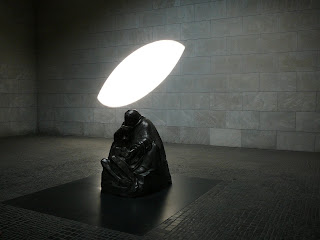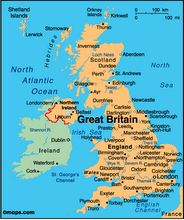 Fans,
Fans,Thursday
After our trip to Luxembourg in June, which was Tim's "secret destination", it was Megan's turn to surprise Tim, which she did by planning a trip to Berlin. We arrived in the German capital around lunchtime on Thursday and we made our way by bus and then underground through the city and to our hotel in the Friedrichshain district. Hotel Agon was solid and very reasonably priced. It is a little way out of the city, but close to the underground station and close to Simon-Dach Strasse, a street with dozens of restaurants, bars and cafes. We would definitely recommend it!
We set off for the city and when we emerged from the underground, we found ourselves in Potsdamer Platz. Before the Berlin Wall came down in 1989, it ran through right through the centre of Berlin, but it was not just a single wall. It was actually two walls with an area in between known as the "death strip". The death strip had watchtowers, dogs and armed guards with orders to shoot to kill anyone trying to escape over the wall. When the wall was torn down, it left a decent sized area right in the heart of Berlin with nothing built on it. Potsdamer Platz now fills that gap.
Potsdamer Platz is a huge public square with an entertainment complex in the centre, with bars and cafes, cinema theatres and an open air market selling art and sculptures. We wandered through the square and stopped off for a photo with a few sections of the Berlin Wall that still stand there as tourist attractions.
Further along the road we came to the Memorial to the Murdered Jews of Europe, a controversial memorial made up of 2,711 concrete slabs (number not significant) of varying heights arranged in a grid pattern on a sloping 1,900 square metre area. The memorial was controversial for a number of reasons, including that it remembers only the murdered Jews of Europe, and not the homosexuals, handicapped and other groups of people who were murdered by the Nazi regime. We walked amongst the blocks and then sat down for a drink overlooking the memorial before moving on.
Berlin's most famous landmark is the Brandenburg Gate. It is the only remaining gate of a series of gates through which people used to enter the city of Berlin. It was constructed between 1788 and 1791. It is the entry to Unter den linden, the famous boulevard named after the linden trees that line it, which formerly led directly to the city palace of the Prussian monarchs. We passed through the Brandenburg Gate and walked down the long Unter den linden boulevard, stopping to admire the beautiful buildings as we went.
The Humboldt University on Unter den linden is Berlin's oldest university, founded in 1810. It has been attended by many of Germany's greatest thinkers, including Karl Marx, Friedrich Engels and Albert Einstein. Directly across the road from the Humboldt University is a large open square, where on 10 May 1933, students of the university who were followers of the Nazi regime burned around 25,000 "un-German" books. There is now an underground memorial in the centre of the square to remember this sad day, in the form of huge empty bookshelves arranged in a square, apparently with enough room to fit 25,000 books. The memorial can be seen from above ground through a glass panel. There is a plaque nearby with words from poet Heinrich Heine (who attended the university) saying "Where books are burned, in the end people will burn".
Further along Unter den linden we came to the magnificent Berlin Cathedral and we sat on the grass in front of the cathedral for a while, resting our tired legs. Next stop was a German beer garden on the banks of the river, where we tested out some of the local brew, before heading back to our hotel area and trying out the food on Simon-Dach Strasse. The choice was overwhelming, but we had dinner at a nice little restaurant on the first corner. It was very cheap and the servings were enormous!
Friday
We got up fairly early on Friday and had breakfast at the hotel, which was very good, then set off the city where we joined a four-hour walking tour of Berlin. Our tour guide had grown up in Berlin and then studied European history in England for several years, so she was very informative. She pointed out Berlin's TV Tower, a massive structure that can be seen from all over the city, the Berlin Cathedral which we had seen the previous day, the new synagogue, as well as several museums that we walked past, before we hit Unter den linden.
The Neue Wache was built in 1816, originally as a guard house for troops of the Crown Prince of Prussia, but since 1931 it has been a war memorial. The building was heavily damaged by bombing during World War II. In 1960, the repaired Neue Wache was reopened as the Memorial to the Victims of Fascism and Militarism. In 1969, the remains of an unknown German soldier and of an unknown concentration camp victim from World War II were enshrined in the building.
After German reunification in 1991, the Neue Wache was again rededicated in 1993, as the "Central Memorial of the Federal Republic of Germany for the Victims of War and Tyranny." The GDR memorial piece was removed and replaced by an enlarged version of Kathe Kollwitz's sculpture Mother with her Dead Son. This sculpture is directly under the oculus, and so is exposed to the rain, snow and cold of the Berlin climate, symbolising the suffering of civilians during World War II. When we were inside the memorial, the sun was shining through the oculus in the roof, lighting up a patch of the wall in an otherwise dark and depressing room.
At the end of Unter den linden, we stopped in Pariser Platz, a square in front of the Brandenburg Gate, which is mainly filled with banks and overseas embassies now, as well as the famous Hotel Adlon, where foreign heads of state and celebrities stay when in Berlin. It is the hotel where Michael Jackson famously dangled his baby over the railings of the balcony of his hotel room. The newest building in the Pariser Platz is the US Embassy, which has only recently been completed due to lengthy delays over security concerns. Apparently they were worried about how close the public would be to the entrance of the embassy and they even asked (as only Americans could do) if the Brandenburg Gate could be moved back to allow them more space!!!
Through the other side of the Gate we saw the cobblestones that run along the roads and footpaths throughout the city to show where the Berlin Wall used to stand. The tour continued through the Memorial to the Murdered Jews of Europe (which we had seen the previous day) and on to the site of Hitler's bunker. The bunker was so deep underground and so well armoured that it was very difficult to blow up, although it was eventually collapsed and filled in. Until very recently the site has remained rather anonymous and unremarkable, due to concerns over the site becoming a neo-Nazi shrine. However, a small sign was erected marking the spot in 2006.
The walking tour continued on to Checkpoint Charlie, the name given to a crossing point between east and west Berlin during the Cold War. The checkpoint was designated as the single crossing point for foreigners and members of the Allied Forces and was the scene of some amazing escape stories (see below). We also passed a street where the Berlin Wall still stands all along one side of it and we ended the tour by walking along Friedrichstrasse, Berlin's version of Fifth Avenue, lined with big label shops and department stores.
After the tour ended, we grabbed some lunch at a little bakery on Friedrichstrasse and then tracked back to Checkpoint Charlie, where there is a museum about the checkpoint. It is effectively a museum about escapes over the wall...both successful and unsuccessful. There were many fascinating stories of people digging tunnels from their houses under the wall, people being smuggled through the checkpoint in suitcases or hidden inside cars (even one who was hidden inside the engine of a car!) and one about two families who successfully crossed the Berlin Wall in a hot air balloon without being spotted! The museum was quite good, although we found the English translations very poor and the layout was not easy to follow.
After that we split up and Megan went to read the "Topography of Terror" exhibition on the site of the former SS headquarters. There were pictures and information about the Nazis rise to power and their conduct during the war on the back of the section of the wall that we had seen during our tour. Meanwhile, Tim went to check out the Reichstag, the German house of parliament.
We met up again around an hour later and decided to visit the museum underneath the Memorial to the Murdered Jews of Europe. This museum was superb (well, apart from the subject matter, which was shocking) - very informative and easy to follow and just the right amount of information. We fully recommend it to anyone visiting Berlin. By the time we left the museum, it was around 7pm and we walked a couple of blocks to Potsdamer Platz and had a beer in the middle of the busy Sony Centre, packed full of people. The Sony Centre has a huge structure on top of the roof, designed to look like Mt Fuji in Japan, and the structure then comes down inside the centre and looks like a giant spinning top (see picture below). After our drinks, we checked out some of the art on display at the market stalls in the centre.
Back in our 'hood, we returned to Simon-Dach Strasse for dinner, this time visiting a restaurant called Euphoria. Again the servings were huge and the prices were not. Germans, it would seem, eat a lot of meat...

Megan and
part of the
wall

Memorial
to Murdered
Jews of
Europe

And again

Tim outside
a beer hall

Megs with
a giant bear

Branden-
burg Gate

Memorial
to book
burning

Megan reading
a book in the
square where
the books
were burned...

Berlin
Cathedral

Neue
Wache

Inside
Neue
Wache

Megan at
Brandenburg
Gate

Check-
point
Charlie

Site of
Hitler's
bunker

Parts of
the wall
still standing

Reich-
stag






No comments:
Post a Comment